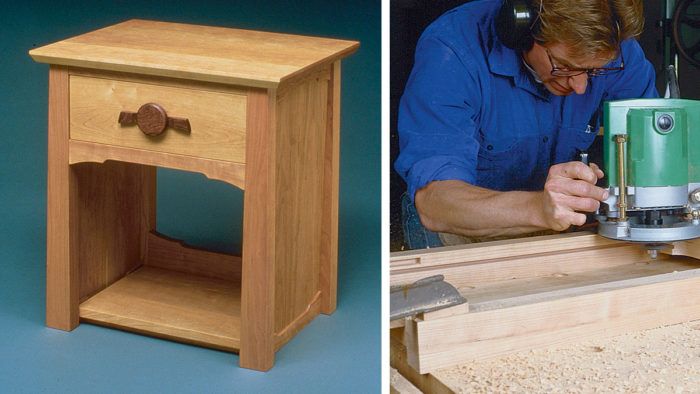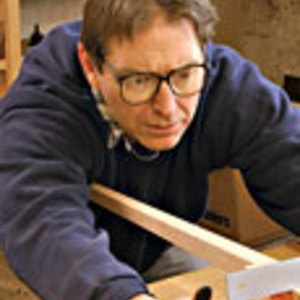
Synopsis: Gary Rogowski’s nightstand won’t put you to sleep. It’s cherry with a cloud-rise pattern on its rails and a rosewood pull on the drawer, all of which give it a look reminiscent of Chinese furniture. A detailed project plan shows how the legs are flared and how the rails soften the weight of the nightstand. Rogowski explains how to build the carcase, make the panels, glue everything up, and construct the drawer.
A nightstand shouldn’t be so plain that it puts you to sleep. I designed the cherry nightstand in the photo below as part of a bedroom set, but I think the resulting table stands alone quite nicely. The cloud-rise pattern on its rails along with the rosewood pull on the drawer give the nightstand a look reminiscent of Chinese furniture. The basic design can be adapted for an end table, but keep in mind that if you change proportions in one area, other dimensions will need to change as well.
Since it was designed as a nightstand, the first parameter for establishing dimensions was the 20-in. height of the bed’s mattress, to which the stand would be a partner. I decided on a height of 23 in., and then proportioned the stand’s width and depth to complement this height and allow enough space on top for a lamp, book and cup. The flaring legs add visual weight to the base of the nightstand, while the cloud-rise pattern on the rails softens this effect and lightens the load. The rails are inset from the legs to provide depth and shadow play, and the overhanging top is beveled to give the entire piece definition and a certain oriental grace. The rosewood drawer pull is the final touch and gives the stand its own personal character.
The nightstand is constructed following the same methods I use for larger cabinets or chests. The carcase frames are joined with haunched tenons in routed mortises and the panels that fill these frames are glued up from solid cherry. The bottom shelf and the nightstand’s top, which are also solid wood, are mounted as shown in the drawing to allow for seasonal expansion and contraction. The drawer parts are all joined with sliding dovetails and the -in. plywood bottom is slid into grooves in the sides and front and screwed to the bottom of the drawer’s back. Although simple in design, the nightstand is a challenge to build because of its joinery and details.
Joining the carcase
The nightstand requires about 4 bd. ft. of cherry for the legs and about 18 bd. ft. of cherry for everything else including the drawer parts. I mill the parts for the entire piece about in. oversize and let them sit for about a week in the shop, so they can warp or cup if they’re going to, before final dimensioning. The -in. by -in. legs are then milled and crosscut to length, and all the mortises and panel grooves are routed in them before the outside face is tapered. Similarly, the rails are milled to size and the tenons tablesawn on their ends before the cloud-rise pattern is bandsawn.
From Fine Woodworking #80
For the full article, download the PDF below:
Fine Woodworking Recommended Products


Blackwing Pencils

Sketchup Class






















Log in or create an account to post a comment.
Sign up Log in